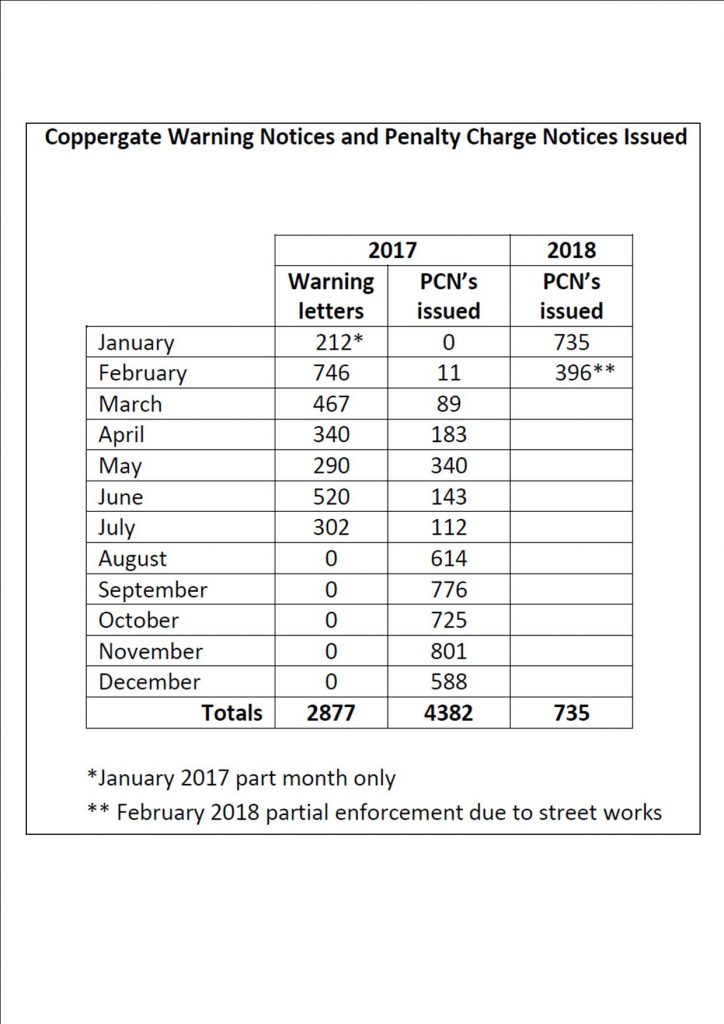So which firms owe the York Council money?
It has taken long time, but we now know which companies haven’t paid their NNDR (business rates) in York during the last 3 years.
In response to a Freedom of Information request, the Council has listed 138 traders who have arrears of over £100.
Some have gone into administration while others have decided to repay debts gradually. In some cases, the bailiffs are being sent in
…and it must be said that no business is guaranteed to be a success. Times change, tastes vary and sometimes business do go under. Propriators can be taken ill, some even die.
That is the way life works so there will always be some bad debt.
….. but the total outstanding debt is now over £576,803 and other taxpayers must make up that deficit if public services are to be maintained.
So it is also important that lists of long term debtors are made public.
This allows residents to provide information on the whereabouts of business people and taxpayers who may have absconded. For many years the York Council did this routinely with some useful leads providing a way for money to be reclaimed from those who were seeking to evade their responsibilities.
In some cases, unscrupulous individuals were found to have amassed large arrears before going into administration and then setting up a new company with a similar name and providing much the same service. Often, they operated out of the same premises.
Now a new barrier to transparency has emerged.
The Council is refusing to divulge the names of companies where this may lead to an individual being identified. In some cases, these may be single traders operating under their own name.
The Council says, “some of the business names are names of individual’s and have been withheld as they are exempt under Section 40(2) of the Freedom of Information Act (2000), as they constitute personal information under the Data Protection Act (1998)”.
Hmm!
The names of some companies have, however, been revealed. This means that the names of their directors can be found simply be searching records at Company’s House (which can now be done “on line”)
The Councils position doesn’t entirely add up.
Debtor information like this was published as recently as 2013 by the Council.
They also take legal action to recover debts (essential before bailiffs can be used) and these preceding are not taken “in camera”. The information is in the public domain.
In this case we think that the public interest outweighs any right to anonymity and we will appeal against the Council’s refusal to provide the names of business owners.
In the meantime, the list of those debtors owing more than £100 is provided here.
No doubt the Councils finance department would appreciate any information about the whereabouts of any who may have absconded.



 Let’s start with an example of good practice.
Let’s start with an example of good practice.
 Nor can the York Council bask in any glory. In February, we asked which businesses had not paid their NNDR (Rates) bills in each of the last 3 years.
Nor can the York Council bask in any glory. In February, we asked which businesses had not paid their NNDR (Rates) bills in each of the last 3 years.
 A year or so ago, the then new York Council Chief Executive promised a fresh approach to the amount of information on Public Services made available to York residents. Questions would be answered without the need to submit formal Freedom of Information requests to the Council. It would be unnecessary to refer many issues for determination by the Information Commissioners Office (ICO)
A year or so ago, the then new York Council Chief Executive promised a fresh approach to the amount of information on Public Services made available to York residents. Questions would be answered without the need to submit formal Freedom of Information requests to the Council. It would be unnecessary to refer many issues for determination by the Information Commissioners Office (ICO)



 http://CouncillorA couple of months ago we asked – under Freedom of Information rules – for an update on the activities of City of York Councillors.
http://CouncillorA couple of months ago we asked – under Freedom of Information rules – for an update on the activities of City of York Councillors. In April the North Yorkshire Crime and Policing Commisioner (PCC), Julia Mulligan, announced that 6 additional mobile speed camera vans were being deployed in the area. This brought the total n number of vans to 12.
In April the North Yorkshire Crime and Policing Commisioner (PCC), Julia Mulligan, announced that 6 additional mobile speed camera vans were being deployed in the area. This brought the total n number of vans to 12. There is confusion today about whether private vehicles can access the rapid recharging points at Monks Cross and Poppleton Bar.
There is confusion today about whether private vehicles can access the rapid recharging points at Monks Cross and Poppleton Bar.


